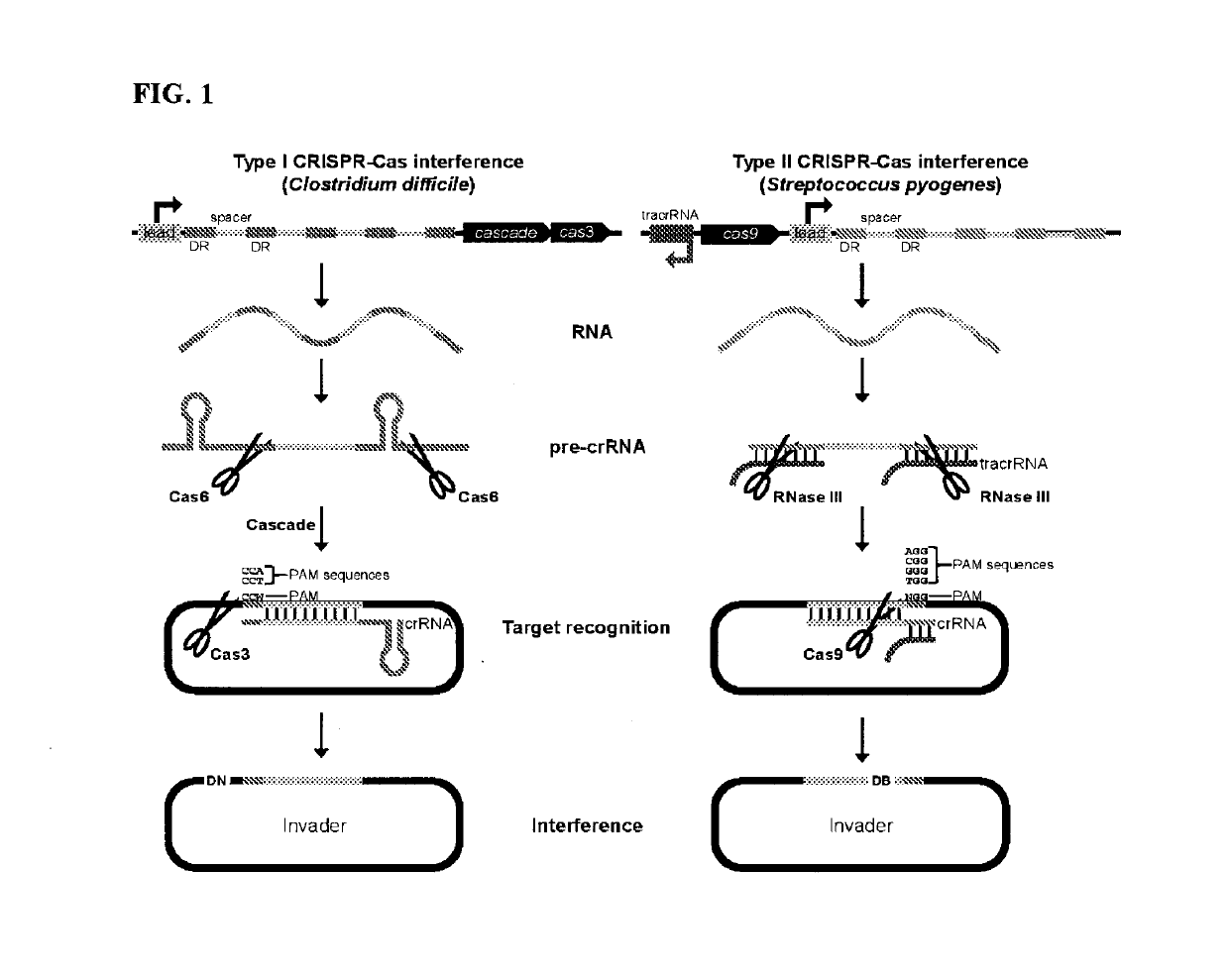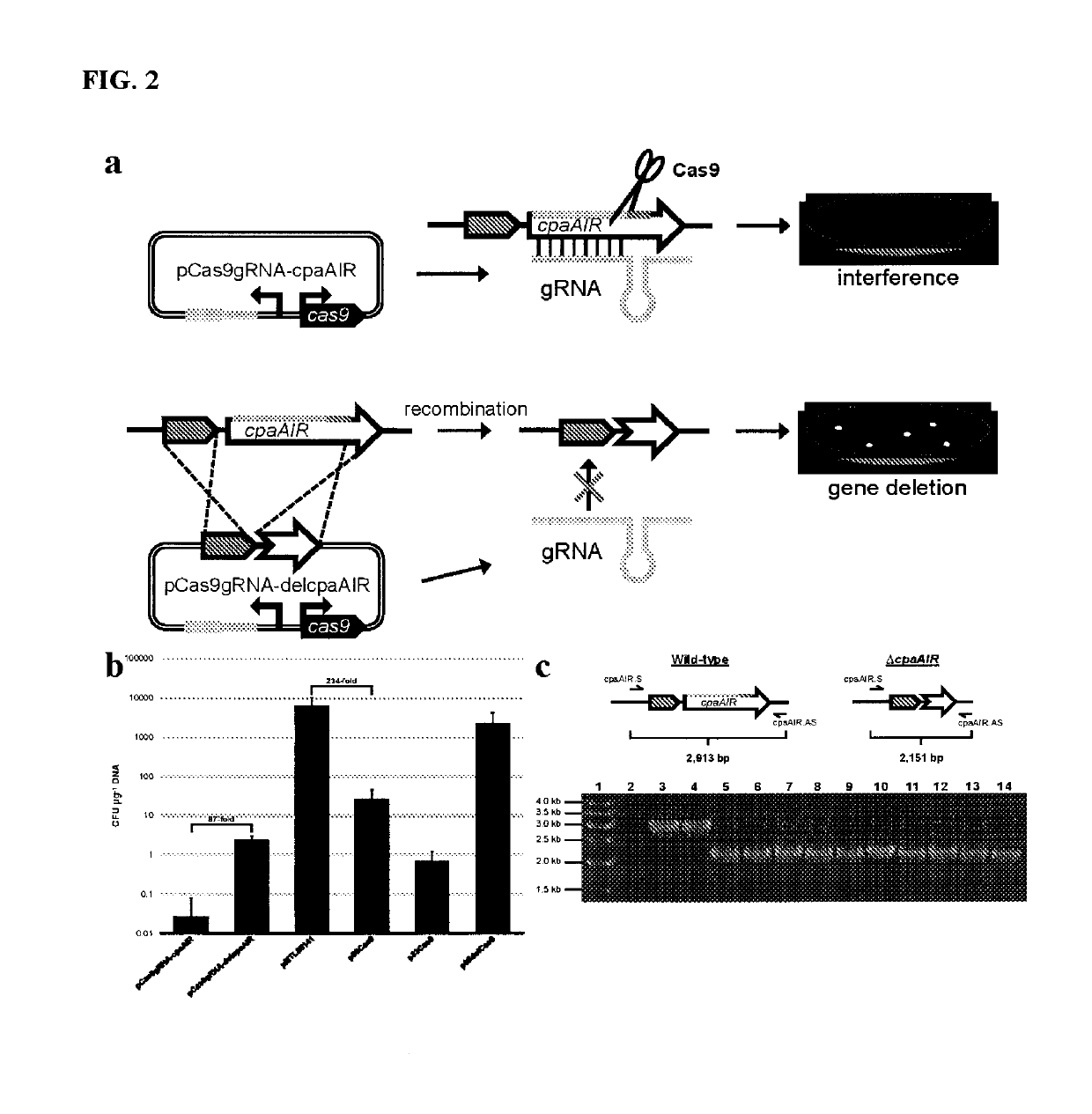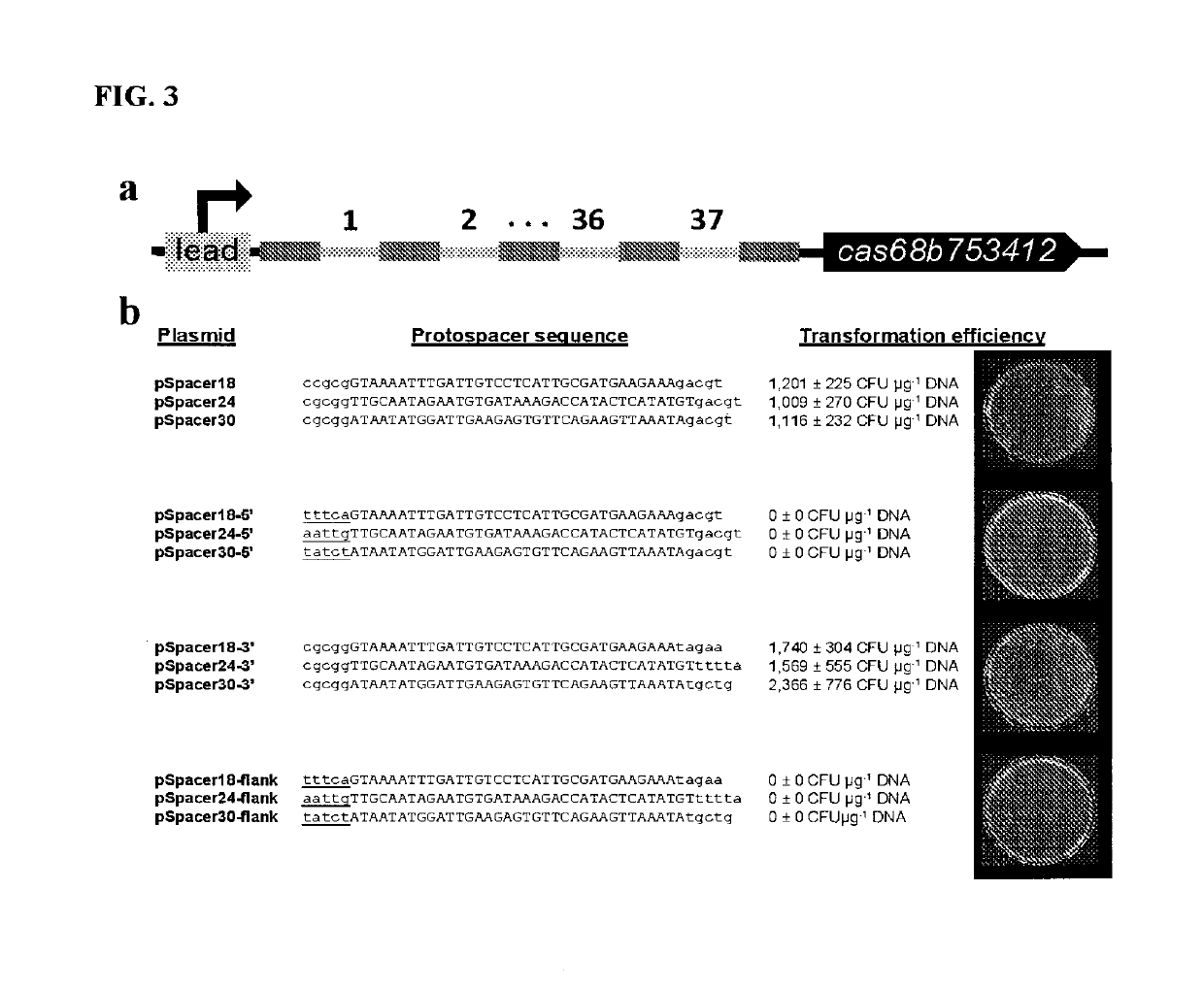Harnessing heterologous and endogenous CRISPR-Cas machineries for efficient markerless genome editing in Clostridium
a genome editing and heterologous technology, applied in the field of heterologous and endogenous crisprcas machines, can solve the problems of ineffective markerless genome editing, low transformation efficiency, and low overall transformation efficiency of clostridial genome engineering methods, and achieves high conversion efficiency, high cost, and high cos
- Summary
- Abstract
- Description
- Claims
- Application Information
AI Technical Summary
Benefits of technology
Problems solved by technology
Method used
Image
Examples
example 1
Strains, Plasmids, and Oligonucleotides
[0122]Strains and plasm ids employed in this study are listed in Table 4. Clostridium pasteurianum ATCC 6013 was obtained from the American Type Culture Collection (ATCC; Manassas, Va.) and propagated and maintained according to previous methods (Pyne, et al, 2013; Pyne, Moo-Young, et al, 2014). Escherichia coli strains DH5α and ER1821 (New England Biolabs; Ipswich, Mass.) were employed for plasmid construction and plasmid methylation, respectively. Recombinant strains of C. pasteurianum were selected using 10 μg ml−1 thiamphenicol and recombinant E. coli cells were selected using 30 μg ml−1 kanamycin or 30 μg ml−1 chloramphenicol. Antibiotic concentrations were reduced by 50% for selection of double plasmid recombinant cells. Desalted oligonucleotides and synthetic DNA constructs were purchased from Integrated DNA Technologies (IDT; Coralville, Iowa). Oligonucleotides utilized in this study are listed in Table 5 and synthetic DNA constructs ar...
example 2
DNA Manipulation, Plasmid Construction, and Transformation
[0123]A cas9 E. coli-Clostridium expression vector, p85Cas9, was constructed through amplification of a cas9 gene cassette from pCas9 (Jiang, et al, 2015) using primers cas9.SacII.S (SEQ ID NO 1)+cas9.Xhol.AS (SEQ ID NO 2) and insertion into the corresponding sites of pMTL85141 (Heap, et al, 2009). To construct an E. coli-C. pasteurianum Type II CRISPR-Cas9 plasmid (pCas9gRNA-cpaAIR) based on the S. pyogenes CRISPR-Cas9 system, we designed a synthetic gRNA cassette targeted to the C. pasteurianum cpaAIR gene by specifying a 20 nt cpaAIR spacer sequence (ctgatgaagctaatacagat, SEQ ID NO 36), which was expressed from the C. beijerinckii sCbei_5830 small RNA promoter (Wang, et al, 2015; SEQ ID NO 38). A promoter from the C. pasteurianum thiolase gene (SEQ ID NO 39) was included for expression of cas9. The resulting 821 bp DNA fragment (FIG. 5A; SEQ ID NO 35) was synthesized and inserted into the SacII and BstZ17I sites of p85Cas9...
example 3
[0127]Identification of Putative Protospacer Matches to clostridial Spacers
[0128]Clostridial spacers were utilized to query firmicute genomes, phages, transposons, and plasm ids using BLAST. Parameters were optimized for somewhat similar sequences (BlastN) (Altschul, et al, 1990). Putative protospacer hits were assessed based on the number and location of mismatches, whereby multiple PAM-distal mutations were tolerated, while protospacers containing more than one mismatch within 7 nt of PAM-proximal seed sequence were rejected (Semenova, et al, 2011). Firm icute genomes possessing putative protospacer hits were analyzed for prophage content using PHAST (Zhou, et al, 2011) and surrounding sequences were inspected for elements indicative of DNA mobility and invasion, such as transposons, transposases, integrases, and term inases.
PUM
| Property | Measurement | Unit |
|---|---|---|
| resistance | aaaaa | aaaaa |
| composition | aaaaa | aaaaa |
| flexibility | aaaaa | aaaaa |
Abstract
Description
Claims
Application Information
 Login to View More
Login to View More - R&D
- Intellectual Property
- Life Sciences
- Materials
- Tech Scout
- Unparalleled Data Quality
- Higher Quality Content
- 60% Fewer Hallucinations
Browse by: Latest US Patents, China's latest patents, Technical Efficacy Thesaurus, Application Domain, Technology Topic, Popular Technical Reports.
© 2025 PatSnap. All rights reserved.Legal|Privacy policy|Modern Slavery Act Transparency Statement|Sitemap|About US| Contact US: help@patsnap.com



